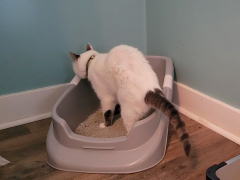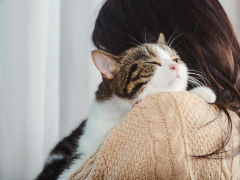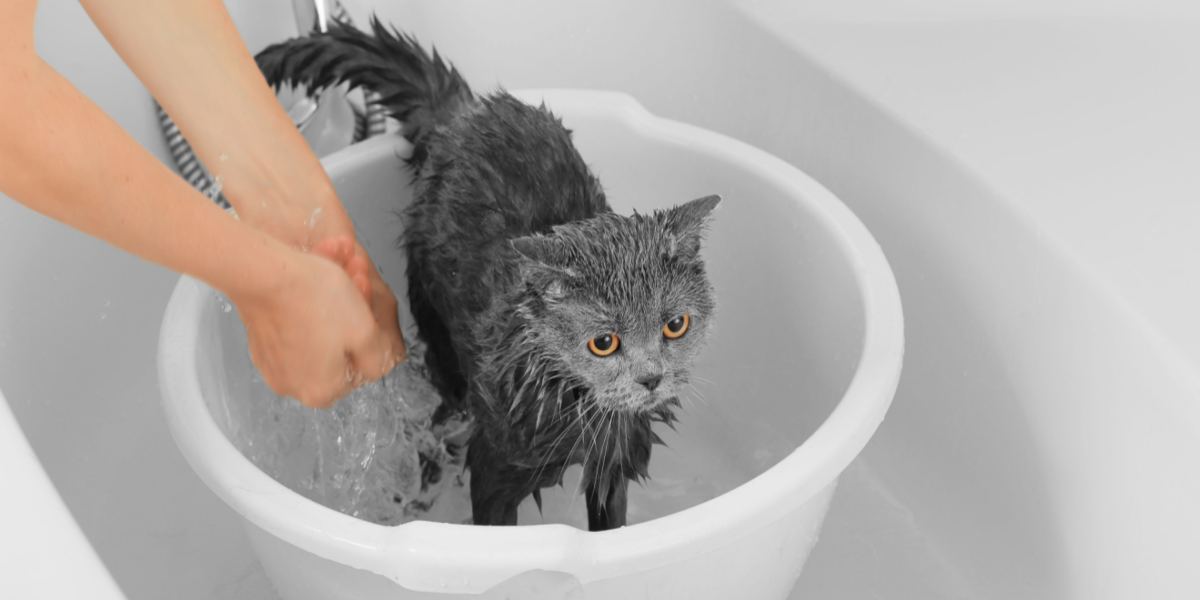
Cats are known for their fastidious habits, keeping themselves exceedingly clean and tidy through regular and thorough grooming.
This attention to cleanliness is often all that is needed to keep your cat’s hair and skin in good order, but there are certain occasions when a bath might be necessary. Most cats are not huge fans of bath time, so if you’re plucking up your courage to shampoo your kitty, here are our best tips and tricks.
When Do I Need To Bathe My Cat?
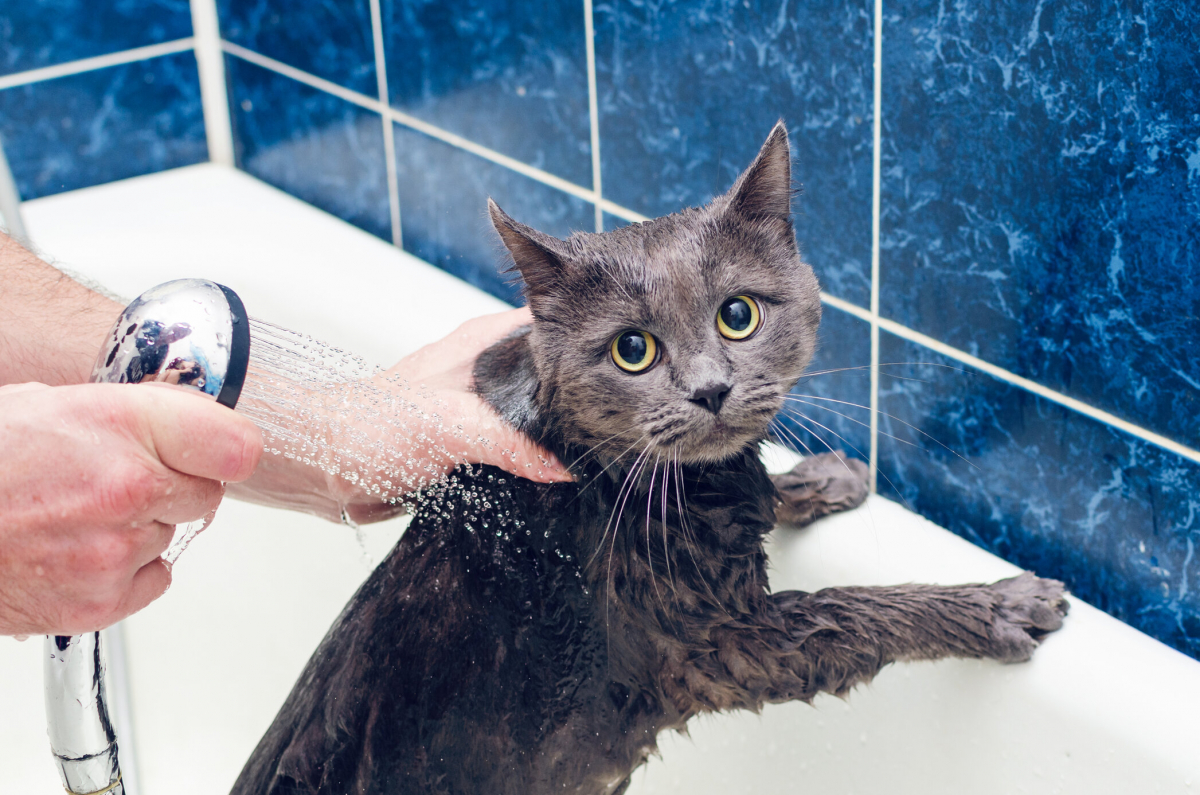
Cats usually stay on top of their cleanliness pretty well, with a thorough licking to remove dust and grime, especially if they get a regular brushing from their owner to help prevent tangles or a wipe-down with a damp washcloth daily to remove excess dirt. However, there are some circumstances where a full bath may be necessary.
Also Read: 7 Cat Breeds That Actually Like Water
Outdoor Cats

If your kitty likes to explore the great outdoors, chances are they may end up getting into mischief at some point. Whether rolling around in something stinky, getting their fur tangled in brambles, or even just getting themselves filthy from enjoying a dust bath, sometimes only a bath will do to get them clean again.
Some cats like to sit under parked cars, which can be hazardous as gasoline or antifreeze can drip onto them, both of which can be harmful if the cat ingests them by licking themselves clean.
Longhaired Cats
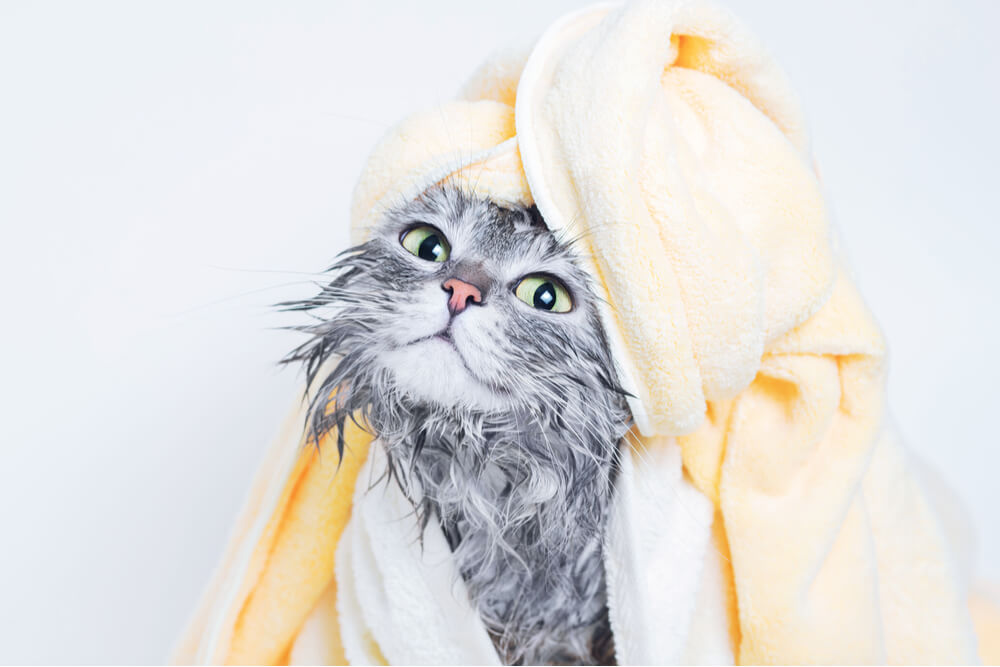
After bathing your cat, dry them off with a warm towel.
We love gorgeous, fluffy cats, but longhaired cats are more prone to tangles and mats in their fur. We all want our pets to be clean and comfortable, and longhaired breeds require more maintenance than shorthaired felines. They will either need to tolerate some bathing and grooming at home or take a regular trip to a professional groomer.
Also Read: Why Do Cats Groom Each Other? Reasons Why Cats Socially Groom
Older Cats
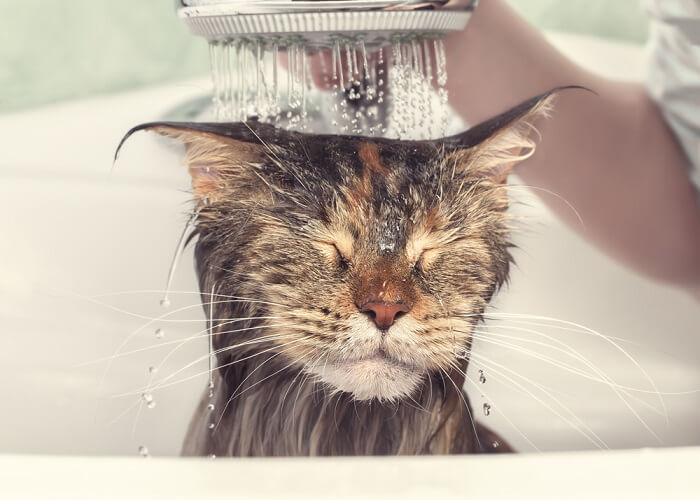
If you own an older pet, you may have noticed that their hygiene is not quite up to previous standards. Elderly cats often begin to groom themselves less, which can be a sign of a medical condition such as arthritis, which can restrict their movement. If your cat is grooming less, a checkup with a veterinarian is a good idea, and they will likely need ongoing help with their cleanliness.
Also Read: Repetitive, Excessive And Compulsive Grooming In Cats
Medical Conditions
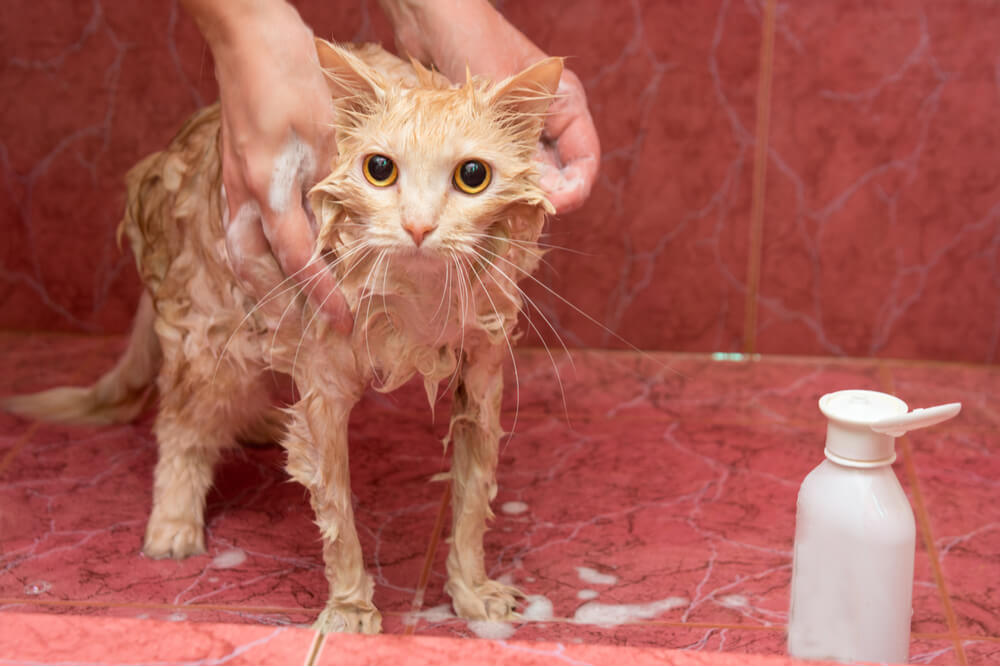
When you bathe a cat, it’s best to avoid dunking your cat in water. Instead, let your cat stand on a stable surface and use a sprayer or cup of water to gently wet your cat.
Some cats may suffer from certain dermatological conditions, such as ringworm, which require treatment with a medicated shampoo to remove the source of infection. There are also some chronic skin conditions, such as flea allergies, which lead to areas of skin irritation, and regular bathing can help control inflammation and discomfort.
Flea Infestation
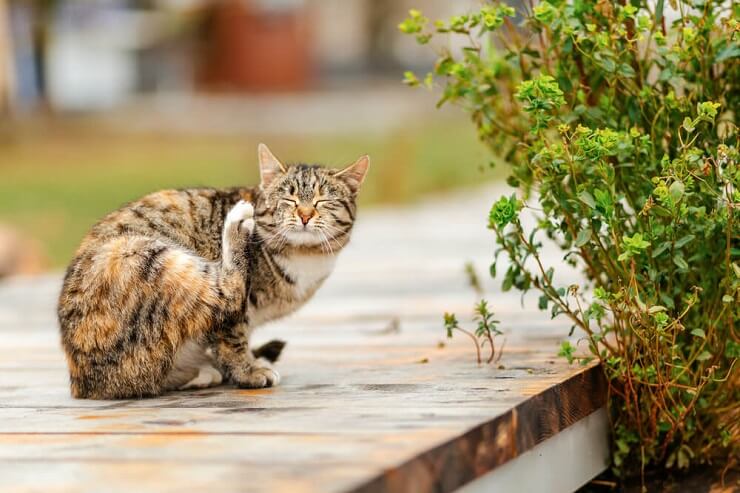
Most flea-infested cats develop dermatitis, with hair loss and itchy skin especially over the lower back, around the head, and elsewhere.
If your cat is suffering from an infestation of fleas, part of the treatment includes a thorough bathing to remove fleas, flea eggs, and flea dirt (flea feces) from your cat’s skin and coat.
Also Read: 8 Best Flea Treatment For Cats
Owner Allergies
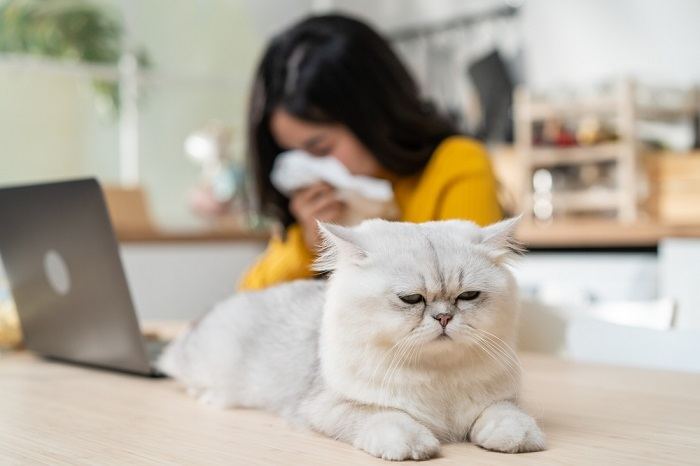
Recent research has shown that regular bathing of cats can help reduce symptoms for owners who are allergic. This is only appropriate if your cat tolerates bathing well, but it can make a big difference if you’re navigating that difficult balance of owning a cat if you have allergies.
What Do I Need To Bathe My Cat?
If you’re planning on bathing your pet, it is best to make sure you are prepared with everything you need before you start!
Sink Or Bathtub
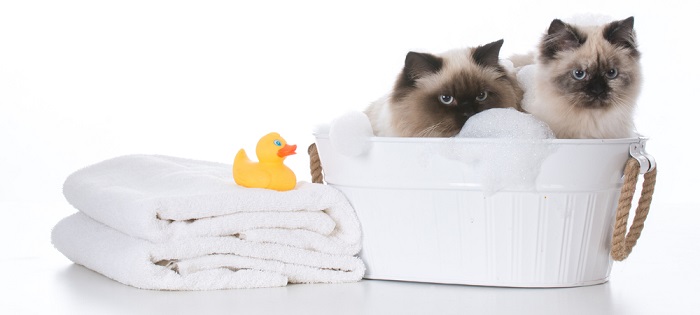
Before getting started, gather all of your bathing supplies you’ll need so they are within arms reach.
Some small cats will fit into a bathroom sink, but using the tub is usually easier for all. You might want to wear a long sleeve shirt and some rubber gloves—it can get messy! Having some non-slip mats for your cat to stand on can make them feel more secure. You can also place a towel in the bottom of the sink or bathtub so your cat isn’t slipping around on the bottom.
Also Read: The 5 Best Cat Litter Mats for Trapping Litter
Shampoo Or Soap
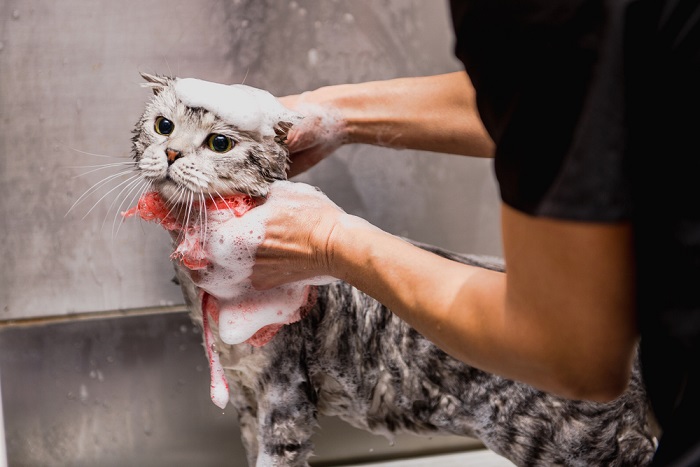
The best thing to use is a cat shampoo—human shampoo (even baby shampoo) is designed for human skin, which has a different pH than that of cats. If your cat has a skin condition, your veterinarian may recommend a medicated shampoo.
Water
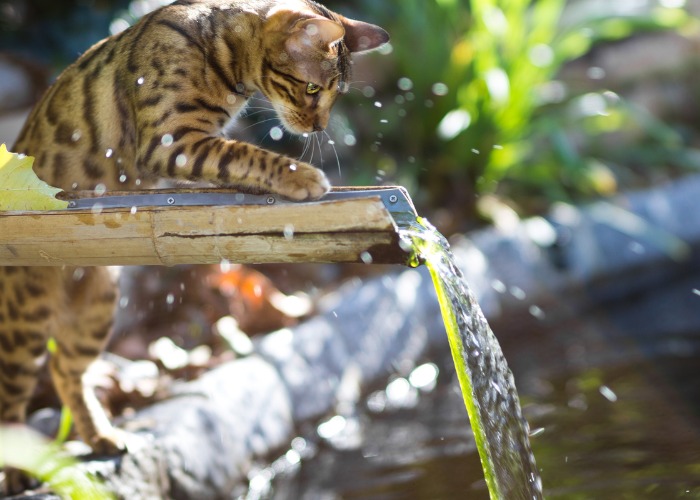
While it’s true that all cats are truly individuals by nature, almost every single Bengal cat you meet has a fondness for water.
You’ll need to get your kitty completely wet, but you don’t want them panicking in a deep bath. Use only a few inches of lukewarm water in the tub or sink, and use a gentle spray nozzle, a washcloth, or a pitcher to pour water for wetting and rinsing.
Drying
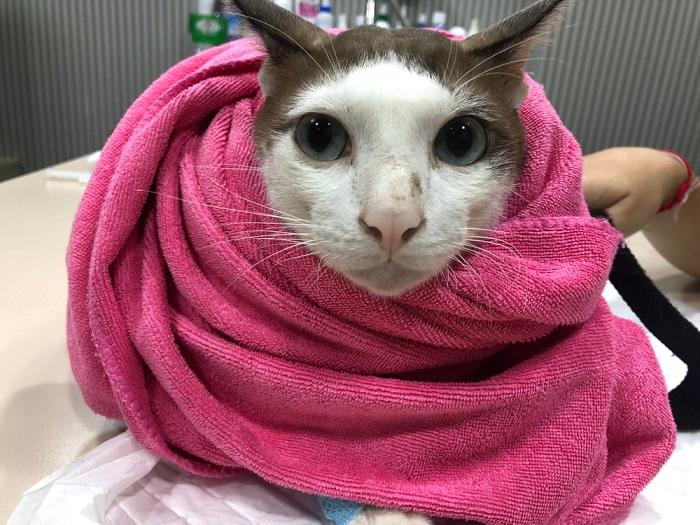
Have a large towel nearby to gently rub your kitty down after the bath. Some cats will tolerate the blow dryer on a low setting. Pet hair dryers are safer as they don’t get as hot as human hair dryers. If you do use a human hair dryer, use it on the lowest temperature setting to avoid burning your cat’s delicate skin.
Extras
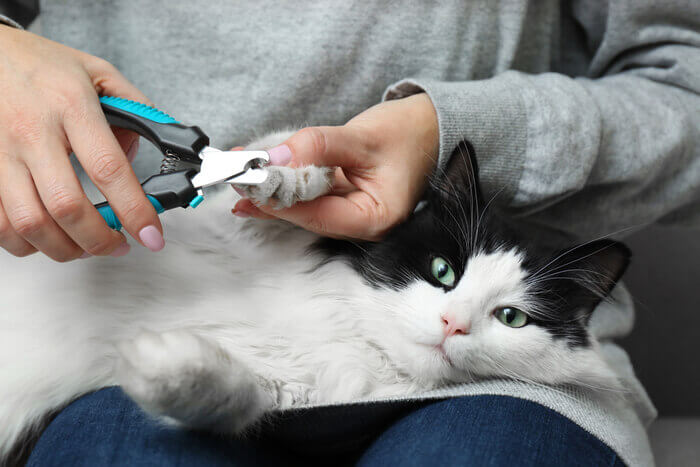
Depending on whether your cat needs a quick dip or a more in-depth grooming experience, you might want to have a q-tip to carefully clean the outer part of your cat’s ears (never poke it down inside!) or some cotton ball. Some nail clippers might be needed if you want to check your cat’s claws. An extra towel can be handy.
Also Read: Why Does My Cat Follow Me To The Bathroom?
Top Tips For Cat Baths
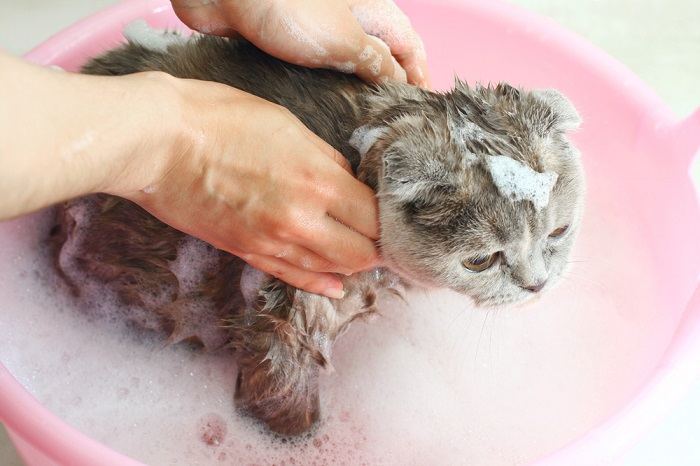
Wet your cat’s hair to the skin, massage in the shampoo all over, then rinse thoroughly so no soap is left behind, which will make your cat’s coat greasy or flakey.
You’re ready to take the plunge (literally!), so how do you actually give a cat a bath? Here’s our step-by-step guide, with all the top tips and tricks.
- Get your bath, tub, or sink ready, with a non-slip mat and a few inches of lukewarm water. The water should be about the depth that will just reach the top of their legs.
- Place your cat gently into the bath, holding them close to your chest until they relax.
- Use a jug or pitcher to pour water carefully over your cat until they are completely wet.
- Don’t pour water over the face! Use a damp washcloth to wipe around the face, being cautious around the mouth and eyes.
- Put the required amount of cat shampoo onto your hands, then rub it all over your cat. Some medicated shampoos don’t lather, so don’t keep adding more shampoo, just carefully rub all over your cat’s fur, avoiding the mouth and eyes.
- Some shampoos need to be left on for a certain amount of time before rinsing so follow directions carefully. Use this time to give your cat some treats as a reward and make sure you give lots of praise throughout the experience.
- Use fresh water from a jug, or a very gentle shower setting to rinse away all the shampoo residue. Make sure your cat is properly rinsed—they will likely groom themselves after their bath and it is not recommended that they ingest any shampoo.
- Dry your cat using a towel, if tolerated. Blow-dryers are usually too scary for most cats, but most will tolerate a gentle rub with a large, soft towel.
- Let your cat dry off in a warm room. They may have found the experience stressful, so plenty of praise and some time to calm down somewhere safe, warm, and quiet is essential.
Conclusion
Most cats do not need regular bathing, but there are some circumstances where only a thorough shampooing will do! Bathing a cat doesn’t have to be stressful, using our top tips and lots of treats and patience it can be a calm experience for all involved.
Also Read: How To Get A Cat Into A Carrier: 6 Steps For Success
Frequently Asked Questions
How do you clean a dirty cat?
If your cat is an outdoors adventurer, they may need regular grooming and brushing to remove debris and dirt from their coat, and any tangles in their fur. Some substances, like gasoline, need to be removed immediately so that the cat doesn’t lick them off, and this usually requires a bath. Small patches of dirt can be removed using a damp washcloth.
Are you supposed to give cats baths?
Most cats are excellent at grooming themselves and do not require regular bathing. Longhaired cats need more coat maintenance than other breeds. Some cats may require baths, for example, if they get themselves very dirty, if they have a skin condition that needs treatment, or if they are elderly and not taking good care of their coat.
Why do cats hate water?
Cats originated from the savannahs of Africa and are not natural swimmers. They are unfamiliar with being immersed in water and tend to panic. If you need to bathe a cat, use a small amount of lukewarm water.
How can I calm my cat down in the bath?
Bathing a cat can be achieved without stress! Remain calm and use lots of praise and treats. Only fill the bath a few inches with lukewarm water, and use a pitcher or very gentle spray nozzle to wet your cat. Hold your cat close to you so that they feel secure, and never pour water over their face and eyes.





